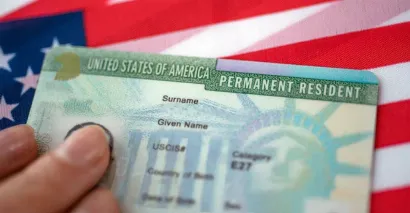Key Highlights
The November 2025 U.S. Visa Bulletin is a grim reality check for Indian nationals expecting to have their green cards processed. According to the latest announcement, the majority of the priority dates in family-sponsored and employment-based categories have not changed; rather, there are only slight changes in some subcategories. To some who have been following their position in the visa queue, the bulletin highlights the pressure and delays in the visa allocation by countries such as India, which are overburdened. This article unbundles the changes (and the ones that are not), explains their meaning and defines what the applicants need to keep an eye on.
What Is the U.S. Visa Bulletin & Why It Matters
It is necessary to become familiar with the U.S. Visa Bulletin and its functions before immersing oneself in the November 2025 details and the effects that it has on the green card applicants.
Purpose & Structure: Filing vs Final Action Dates
The Visa Bulletin, an issue of the U.S. Department of State every month, establishes two dates by which each visa preference category and country of chargeability can be charged:
-
Dates for Filing (also referred to as filing window): The first date on which an applicant may file their adjustment of status application or immigrant visa application, when their priority date is before the date listed.
-
Final Action Dates: The last date on which a visa number is effectively available; i.e. when the USCIS or the consulates can approve and complete the green card.
-
The Dates are Important: Although, as long as your petition is approved, you may proceed with your application, you cannot do so until the last action date has become current (or the cutoff).
Oversubscription & Per-Country Limits
India is viewed as a country that is over-subscribed in terms of visa quotas- that is demand is growing way beyond the quotas set by the country per year. The backlog is mostly due to high demand, particularly in such areas of employment as EB-2 and EB-3. Therefore, quite a number of Indian applicants have to wait a long time before having their priority dates mature. Visa Bulletin attempts to balance the supply and demand, though in high-demand categories, the movement is low or often stagnant.
In brief: even minor changes (or no change) in the filing or final action dates may have a significant impact on the ability of an applicant to file or the case to be adjudicated.
Also Read: Cost of Transit Visa for USA: New Fees & Process Guide
Key Changes in November 2025 for Indian Applicants
The update of November 2025 is not a shocker. The key findings of the nationals of India in terms of family and employment are as follows:
Family-Sponsored Preferences
Final Action Dates (India)
-
F1 (Unmarried Adult Children of U.S. Citizens): It has not changed since Nov 8, 2016.
-
F2A (Spouses and Minor Children of Permanent Residents): Leaves on Feb 1, 2024 (the same)
-
F2B (Unmarried Adult Children of Permanent Residents): Makes a slight step forward between Nov 22, 2016 and Dec 1, 2016.
-
F3 (U.S. Citizen Married Children): Unchanged Sep 8, 2011.
-
F4 (Siblings of U.S. Citizens): No change as of Nov 1, 2006.
Dates for Filing (India)
-
F1: Remains at Sep 1, 2017
-
F2A: Advances from Sep 22, 2025, to Oct 22, 2025
-
F2B: Advances from Jan 1, 2017, to Mar 8, 2017
-
F3: Remains at Jul 22, 2012
-
F4: Changes slightly between Dec 1, 2006 and Dec 15, 2006.
Interpretation: F2B and F2A are the only categories of families that show no movement. Small profits should be hailed, particularly to F2A and F2B, but generally the outlook is slow.
Employment-Based Preferences (India)
Final Action Dates (India)
-
EB-1 (Priority Workers): Stagnant since February 15, 2022.
-
EB-2 (Advanced Degree / Exceptional Ability): Relocates between January 1, 2013 and April 1, 2013.
-
EB-3 ( Skilled Workers and Professionals): Aug 22, 2013.
-
Other Workers (Unskilled): Also remains Aug 22, 2013
-
EB-4 (Certain Special Immigrants): As of Jul 1, 2020.
-
EB-5 (Unreserved): Remains at Feb 1, 2021
Dates for Filing (India)
-
EB-1: Remains Apr 15, 2023
-
EB-2: Remains Dec 1, 2013
-
EB-3: Remains Aug 15, 2014
-
Other Workers: Remains Aug 15, 2014
-
EB-4: Remains Feb 15, 2021
-
EB-5 (Unreserved): Remains Apr 1, 2022
Interpretation: The movement that can be realised is that of EB-2 final action, which improves by three months. Nevertheless, even this small change will still hardly change the wait time of most Indian applicants in this highly oversubscribed category.
Also Read: How Many Types of Visa in USA? New Full Expert Guide
Why Movement Is So Limited for India
The limited gains of the November 2025 bulletin indicate more systemic limitations of the immigration policy of the United States and the dynamics of Indian demand in particular:
-
Persistent Backlogs & Oversubscription
The number of visa applications to India has been high, which has continuously surpassed its yearly quota and has placed most of the categories into a languishing backlog. In the case of persistent demand, the system will not clear the demand fast, resulting in incremental adjustments. -
Per-Country Caps
The immigration law of the U.S applies a 7 per cent per country quota to both family-based and work-based visas. The demand in the world cannot exceed its limit, even in the case of India. -
Demand Smoothing & Visa “Chargeability”
To ensure equal allocation, the State Department usually tries to slow down the progress to prevent sharp changes of months. This causes the conservative increments, particularly in the heavy backlog countries. -
Carryover Constraints & Unused Numbers
There are occasions of unused visa numbers in one category or one country being re-designated, but these redesignations are limited and may rarely generate major surges to India because of its big backlog.
So, most of the time, when there is slight movement, it is not enough to satisfy most of the applicants waiting.
Impacts on Indian Green Card Aspirants
How do these developments affect those people who have already petitioned or are on the verge of doing so?
Stagnant Wait Times
Those who have been waiting for decades will not end their waits anymore. There can be no significant movement in years in such categories as EB-1, EB-3, and F1.
Filing Eligibility vs Final Adjudication
Other applicants might experience an improvement of dates to file (i.e. become eligible to file), but still be behind the Final Action Date cutoff, so their application cannot be approved in time.
Increased Uncertainty & Planning Challenges
Having the changes in the order of importance only slightly every month, it is unbelievably challenging to predict when you will reach your priority date. The lack of predictability may frustrate the applicants.
Alternate Strategies
Due to the slow processing, they might consider other options, including spousal petitions, family petitions, or country of chargeability strategies (assuming they are eligible to do so by way of a spouse). Temporary work visas can be viewed as a fallback option by others.
Monitoring Monthly Bulletins Closely
In the case of people in the queue, it is necessary to keep in touch on a month-to-month basis. It is possible to file or to switch position on the priority stack by a small step made during a single month.
Also Read: US Visitor Visa B1/B2
What to Watch Next?
Considering that there were very few changes in November, what can Indian applicants pay attention to in future bulletins?
EB-2 Final Action Dates
Assuming that EB-2 keeps creeping up, then it may be a good omen that it can settle into broader motion, but not in a hurry, unless new policies are introduced.
Family Categorical Shifts Date
Any little variation in F2A or F2B Dates of Filing can enable some applicant to file their adjustment forms promptly.
Carryover Months & Reallocations
Unused visas are sometimes redistributed to congested nations- at least later in the financial year (e.g. spring or summer).
Policy/Legislative Changes
Reforms in the Congress or USCIS (e.g. recapturing unused visas, increasing caps, and exempting family-based quotas per country) could make a significant change to the situation.
Global Demand Fluctuations
Reduction in demand of other countries or classes will leave more numbers free to India- this is never certain.
Conclusion
The 2025 United States Visa Bulletin of November provides marginal relief to the Indian applicants in the green card line. F2B has slight growth, although EB-2 still makes slight growth, and most of the categories do not vary much. The wait is interminable to most applicants, highlighting the systemic limitations that high demand and statutory limits place. The next few weeks and months can be slightly better, but unless there is a reform of the policies, the rate of improvement is expected to remain too slow. Flexibility, vigilance and strategic planning will remain the keys to success on this long and unpredictable road.
Contact TerraTern for more information.








